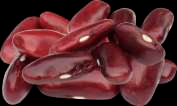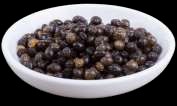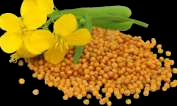Seeds and Seeds Class 5 EVS Chapter 5 CBSE Notes - 2025-26
FAQs on Seeds and Seeds Class 5 EVS Chapter 5 CBSE Notes - 2025-26
1. How do these revision notes for Class 5 EVS Chapter 5 help in quickly understanding the topic of seeds?
These revision notes provide a consolidated summary of all the important concepts from the chapter 'Seeds and Seeds'. They explain key topics like seed germination, parts of a seed, and seed dispersal in simple language, making it easier for students to review and remember the entire chapter quickly before an exam.
2. What is a quick summary of the main parts of a seed as explained in this chapter?
The chapter 'Seeds and Seeds' explains that a seed has three main parts:
- Seed Coat: The outer protective layer.
- Cotyledons: These store food for the baby plant.
- Embryo: The baby plant itself, which grows when it gets the right conditions.
3. What are the essential conditions a seed needs to germinate?
According to the concepts in this chapter, a seed needs three essential things to germinate or sprout: air, water, and the right amount of warmth. Without all three, the seed will remain dormant and will not grow into a seedling.
4. Why is it important for seeds to travel far from their parent plant?
It is crucial for seeds to travel, a process called seed dispersal, to ensure the survival and growth of new plants. If all seeds fell right below the parent plant, they would have to compete for sunlight, water, and soil nutrients. Dispersal gives them a better chance to find enough space and resources to grow into healthy plants.
5. What are the different methods of seed dispersal covered in the 'Seeds and Seeds' chapter summary?
The revision notes for this chapter cover several methods of seed dispersal:
- By Wind: Light seeds with wings or hairs are carried by the wind.
- By Water: Seeds that can float are carried by rivers and streams.
- By Animals: Seeds get stuck to fur or are eaten and passed out by animals.
- By Bursting: Some pods burst open when dry, scattering the seeds.
6. How does a carnivorous plant like the pitcher plant get its nutrients differently from other plants?
A pitcher plant is unique because it is carnivorous. It grows in soil that is poor in nutrients. To supplement its diet, it traps and digests insects to get essential nutrients like nitrogen. This is different from most plants, which get all their required nutrients directly from the soil through their roots.
7. What is the main difference between seed germination and plant growth?
Seed germination is the initial process where an embryo inside a seed sprouts and becomes a seedling, using the food stored within the seed. Plant growth is the subsequent, long-term process where the seedling develops into a mature plant, which requires external resources like sunlight for photosynthesis, water, and nutrients from the soil to continue growing.
8. The chapter mentions Gopal's experiment with chana seeds. What key concept about revision does this activity teach?
Gopal's experiment is a key part of the chapter that demonstrates the importance of water for germination. By observing that only the soaked chana seeds sprouted while the dry ones did not, students learn practically that water is a necessary condition to awaken the embryo within a seed.
































